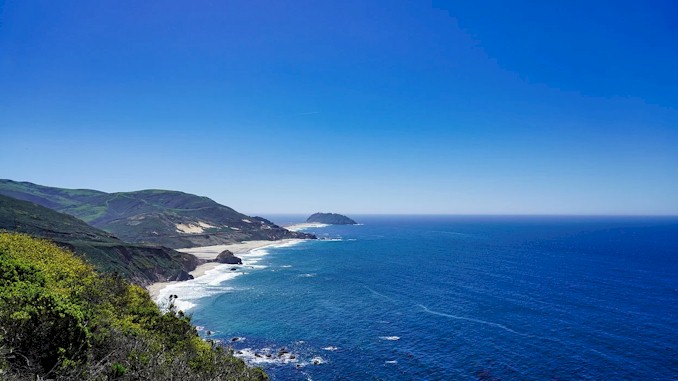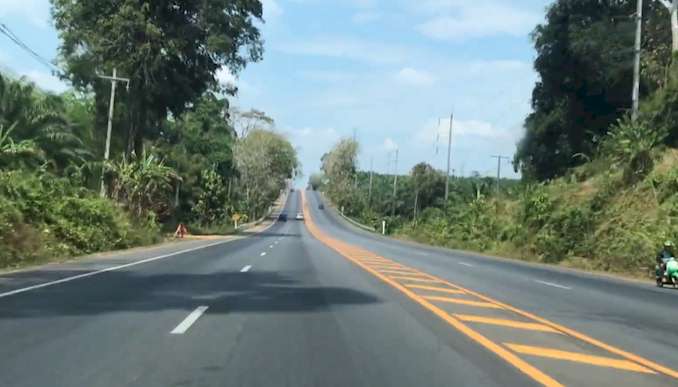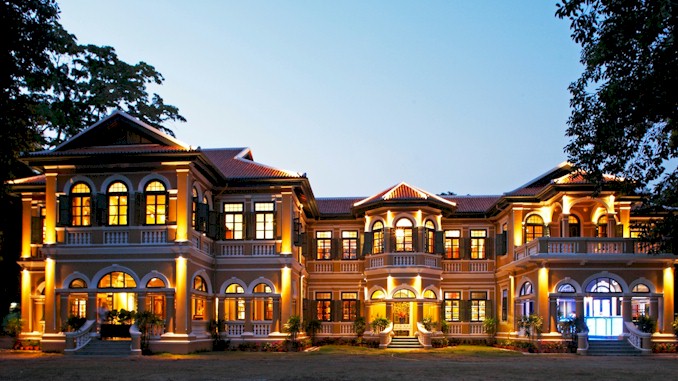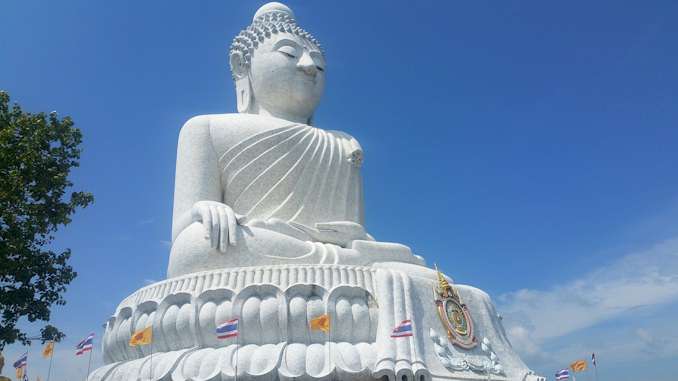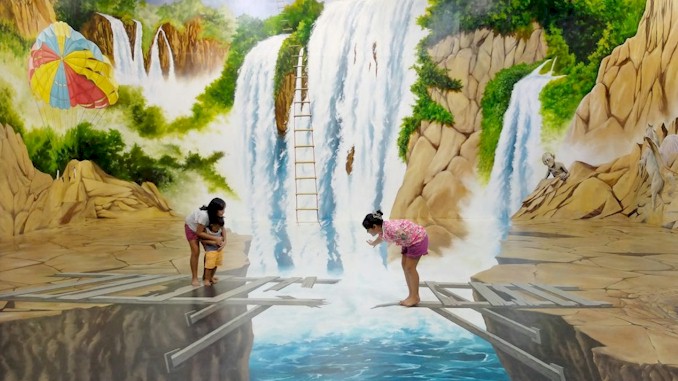Driving the Pacific Coast: 10 Coastal Gems LA to SF
If you’re planning a road trip from Los Angeles to San Francisco, you might be wondering what are the best places to stop along the way. The California coastline is full of scenic beauty, cultural attractions, and natural wonders that you don’t want to miss. That’s why I’ve compiled this list of 10 places you have to visit along the coast, based on my personal experience and research. Whether you’re looking for stunning beaches, historic landmarks, charming towns, or amazing wildlife, I’ve got you covered. In this blog post, I’ll share with you the highlights of each place, how to get there, and what to do when you arrive. By the end of this post, you’ll have a clear idea of how to plan your perfect coastal road trip from LA to SF.
The 10 places you have to visit along the coastline from Los Angeles to San Francisco are: Malibu, Santa Barbara, Solvang, San Luis Obispo, Hearst Castle, Big Sur, Monterey, Santa Cruz, Half Moon Bay, and Muir Woods. These places offer a variety of attractions and experiences for travelers of all interests and budgets.
But wait, there’s more! In the following sections, I’ll go into more detail about each of the 10 places you have to visit along the coast. I’ll tell you what makes them special, how to get the most out of your visit, and some insider tips and tricks that only a local would know. You’ll also find some useful information on how to plan your road trip, such as the best time to go, how to rent a car, where to stay, and what to pack. Trust me, you don’t want to miss this. So buckle up and get ready for an unforgettable adventure along the California coastline!
Introduction: Why You Should Take a Road Trip from LA to SF
If you’re looking for a memorable and rewarding travel experience, you can’t go wrong with a road trip from Los Angeles to San Francisco. This route is one of the most popular and scenic in the United States, and for good reason. It offers a diverse and stunning range of landscapes, cultures, and attractions that will appeal to any traveler.
A road trip from LA to SF is not just a drive, it’s an adventure. You’ll get to explore some of the most iconic and beautiful places in California, such as Malibu, Santa Barbara, Big Sur, Monterey, and Muir Woods. You’ll also discover some hidden gems and off-the-beaten-path destinations that will surprise and delight you. Along the way, you’ll experience the best of what the Golden State has to offer: sunny beaches, rugged mountains, charming towns, historic landmarks, amazing wildlife, and delicious cuisine.
A road trip from LA to SF is also a great way to learn more about the history and culture of California. You’ll see how the state has been shaped by different influences and events over time, from the Spanish missions to the Gold Rush to the Silicon Valley. You’ll also get a taste of the diverse and vibrant communities that make up California, from the glamorous Hollywood to the laid-back Santa Cruz to the progressive San Francisco.
But don’t take my word for it. Here are some facts and figures that show why a road trip from LA to SF is worth your time and money:
- According to AAA, a road trip from LA to SF is one of the top 10 most popular road trips in America.
- The distance between LA and SF is about 380 miles (610 km), which can be covered in 6 hours by car without traffic or stops. However, I recommend taking at least 3 days to enjoy the journey and see all the sights along the way.
- The coastline between LA and SF is part of the Pacific Coast Highway (PCH), also known as Highway 1, which is considered one of the most scenic drives in the world. The PCH stretches for 656 miles (1055 km) along the California coast, from Dana Point in Orange County to Leggett in Mendocino County.
- The coastline between LA and SF is also home to some of the most diverse and rich ecosystems in the world. You’ll find over 20 national parks and monuments, 34 state parks and beaches, 3 national marine sanctuaries, and hundreds of wildlife species. Some of the highlights include Channel Islands National Park, Point Reyes National Seashore, Monterey Bay National Marine Sanctuary, and Pinnacles National Park.
- The coastline between LA and SF is also a cultural and historical treasure trove. You’ll encounter some of the most famous and influential landmarks and attractions in California, such as Hollywood Boulevard, Santa Monica Pier, Hearst Castle, Cannery Row, Golden Gate Bridge, and Alcatraz Island. You’ll also learn about some of the people and events that shaped California’s history and identity, such as William Randolph Hearst, John Steinbeck, Jack Kerouac, Harvey Milk, Steve Jobs, and more.
As you can see, a road trip from LA to SF is more than just a drive. It’s a journey that will enrich your mind, body, and soul. It’s a journey that will inspire you to explore more of this beautiful planet we live on. It’s a journey that you’ll never forget.
So what are you waiting for? Grab your keys, pack your bags, and get ready for the ultimate California road trip!
The 10 Places You Have to Visit Along the Coastline
Now that you know why you should take a road trip from LA to SF, let’s dive into the details of the 10 places you have to visit along the coastline. These are the spots that will make your trip unforgettable and show you the best of what California has to offer. Here they are, in order from south to north:
Malibu: The Ultimate Beach Destination
Malibu is a beach city in the Santa Monica Mountains region of Los Angeles County, California, situated about 30 miles (48 km) west of Downtown Los Angeles. It is known for its Mediterranean climate and its 21-mile (34 km) strip of the Pacific coast, incorporated in 1991 into the city. The exclusive Malibu Colony has been historically home to Hollywood celebrities. People in the entertainment industry and other affluent residents live throughout the city, yet many residents are middle class.
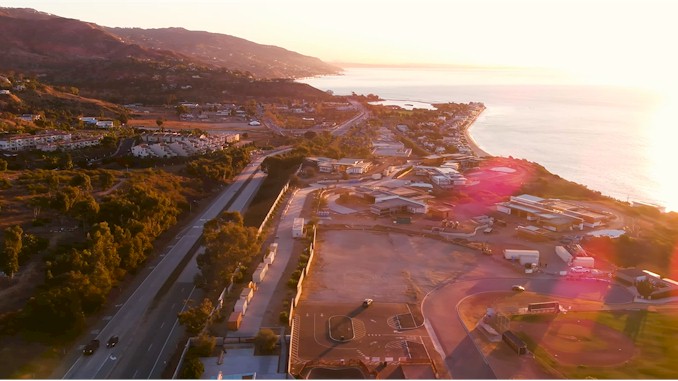
Malibu is nicknamed “the ‘Bu” by surfers and locals, and it has some of the best beaches around. You can choose from Topanga Beach, Big Rock Beach, Las Flores Beach, La Costa Beach, Surfrider Beach, Dan Blocker Beach, Malibu Beach, Zuma Beach, Broad Beach, Point Dume Beach, and County Line. Whether you want to surf, swim, sunbathe, or spot dolphins and whales, you’ll find a beach that suits your mood.
Malibu is also a great place to enjoy nature and culture. You can visit some of the national parks and monuments in the area, such as Channel Islands National Park, Point Mugu State Park, and Santa Monica Mountains National Recreation Area. You can also explore some of the historic landmarks and attractions in Malibu, such as Malibu Pier, Adamson House, Getty Villa, and Pepperdine University.
Malibu is a must-see destination for anyone who loves the beach and wants to experience the glamorous side of California.
| What to do | How to get there | Insider tips |
|---|---|---|
| Surf at Surfrider Beach | Take PCH to Malibu Canyon Road and turn right onto Cross Creek Road. Turn left onto Civic Center Way and follow it to Surfrider Beach. | Surfrider Beach is one of the most famous surfing spots in the world and was designated as the first World Surfing Reserve in 2010. It has a long right-hand break that attracts surfers of all levels. |
| Visit Getty Villa | Take PCH to Getty Villa Drive and turn right. Follow the signs to Getty Villa. | Getty Villa is a museum and educational center dedicated to the art and culture of ancient Greece, Rome, and Etruria. It is modeled after a Roman villa in Herculaneum that was buried by the eruption of Mount Vesuvius in 79 AD. Admission is free but you need to reserve a timed-entry ticket online in advance. |
| Hike at Solstice Canyon | Take PCH to Corral Canyon Road and turn right. Follow it to Solstice Canyon Road and turn left. Park at the Solstice Canyon Trailhead. | Solstice Canyon is a scenic hiking area that features a waterfall, a creek, a historic stone cottage, and ruins of a ranch house that burned down in 1982. The Solstice Canyon Trail is an easy 2.6-mile (4.2 km) loop that takes you through these attractions. |
Santa Barbara: The American Riviera
Santa Barbara is a coastal city in Santa Barbara County, California, situated about 95 miles (153 km) northwest of Los Angeles. It is known for its Mediterranean climate and its historic downtown that features Spanish Colonial Revival architecture. Santa Barbara is also a popular tourist destination, with a variety of attractions, events, and activities that cater to different interests and budgets.
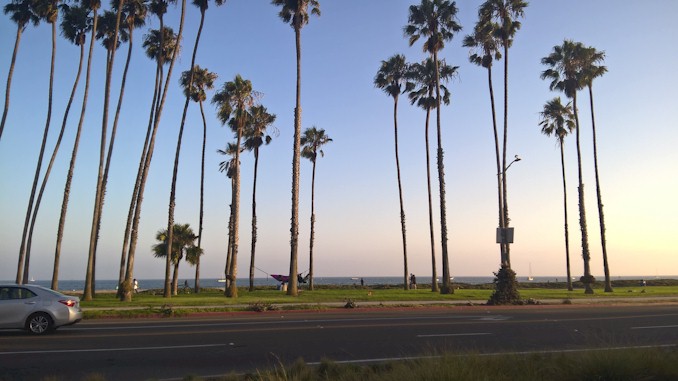
Santa Barbara is nicknamed “the American Riviera” because of its resemblance to the coastal regions of France and Italy. It has some of the most beautiful beaches in California, such as East Beach, West Beach, Leadbetter Beach, Butterfly Beach, and Arroyo Burro Beach. You can enjoy swimming, surfing, kayaking, sailing, whale watching, and more on the sparkling blue waters of the Pacific Ocean.
Santa Barbara is also a cultural and historical hub. You can visit some of the landmarks and museums that showcase the city’s rich heritage, such as Mission Santa Barbara, Santa Barbara County Courthouse, Santa Barbara Museum of Art, Santa Barbara Historical Museum, and Santa Barbara Maritime Museum. You can also explore some of the vibrant neighborhoods and districts that offer shopping, dining, nightlife, and entertainment options, such as State Street, Funk Zone, Presidio District, and Waterfront.
Santa Barbara is a must-see destination for anyone who loves the beach and wants to experience the charm and elegance of California.
| What to do | How to get there | Insider tips |
|---|---|---|
| Visit Mission Santa Barbara | Take US-101 N to Mission Street and turn right. Follow it to Laguna Street and turn left. The mission will be on your right. | Mission Santa Barbara is a historic Spanish mission founded in 1786 by Franciscan friars. It is also known as “the Queen of the Missions” because of its beauty and prominence. It features a church, a museum, a cemetery, a garden, and a gift shop. Admission is $12 for adults and $7 for seniors and children. |
| Explore State Street | Take US-101 N to Garden Street and turn right. Follow it to E Cabrillo Boulevard and turn left. Turn right onto State Street. | State Street is the main thoroughfare of downtown Santa Barbara. It is lined with shops, restaurants, bars, theaters, galleries, and hotels. You can find everything from high-end boutiques to thrift stores, from fine dining to fast food, from live music to comedy clubs. You can also hop on the electric shuttle that runs along State Street for 50 cents per ride. |
| Enjoy Butterfly Beach | Take US-101 N to Olive Mill Road and turn right. Follow it to Channel Drive and turn left. The beach will be on your right across from the Four Seasons Resort The Biltmore Santa Barbara. | Butterfly Beach is one of the most scenic and popular beaches in Santa Barbara. It has soft sand, gentle waves, and stunning views of the ocean and the mountains. It is also one of the few west-facing beaches in California, which means you can catch amazing sunsets here. |
Solvang: A Taste of Denmark in California
Solvang is a city in Santa Barbara County, California, situated about 35 miles (56 km) northwest of Santa Barbara. It is located in the Santa Ynez Valley and is known for its Danish heritage and culture. Solvang was founded in 1911 by a group of Danish immigrants who wanted to establish a Danish colony away from the harsh winters of the Midwest. Solvang is often dubbed “The Danish Capital of America”.
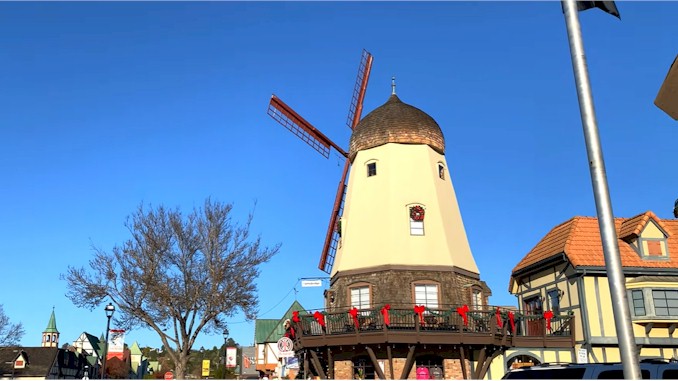
Solvang is a charming and quaint town that will make you feel like you’ve stepped into a fairy tale. You can admire the Danish architecture, windmills, and statues that adorn the streets and buildings. You can also visit some of the museums and attractions that showcase the Danish history and art, such as the Elverhoj Museum of History and Art, the Hans Christian Andersen Museum, and the Old Mission Santa Ines.
Solvang is also a foodie’s paradise. You can indulge in some of the traditional Danish delicacies, such as aebleskiver (pancake balls), smorrebrod (open-faced sandwiches), frikadeller (meatballs), and medisterpolse (sausage). You can also sample some of the local wines, beers, and spirits that are produced in the Santa Ynez Valley.
Solvang is a must-see destination for anyone who loves the European charm and wants to experience a taste of Denmark in California.
| What to do | How to get there | Insider tips |
|---|---|---|
| Ride the Solvang Trolley | Take US-101 N to CA-246 E and follow it to Solvang. The Solvang Trolley departs from Copenhagen Drive and First Street. | The Solvang Trolley is a horse-drawn carriage that offers a guided tour of the town. You can learn about the history and culture of Solvang while enjoying the sights and sounds. The trolley runs daily from 11 a.m. to 4 p.m. and costs $15 for adults and $10 for children. |
| Shop at Solvang Village Square | Take US-101 N to CA-246 E and follow it to Solvang. The Solvang Village Square is located at Copenhagen Drive and Alisal Road. | The Solvang Village Square is a shopping center that features a variety of shops, restaurants, and services. You can find everything from Danish souvenirs, clothing, jewelry, books, antiques, art, and more. You can also enjoy some live music and entertainment on weekends and holidays. |
| Taste wine at Sunstone Winery | Take US-101 N to CA-246 E and follow it to Refugio Road. Turn left onto Refugio Road and follow it to Sunstone Winery. | Sunstone Winery is a family-owned winery that produces organic wines from estate-grown grapes. You can taste some of their award-winning wines in their tasting room or on their patio overlooking the vineyards. You can also tour their wine caves and barrel rooms or book a private tasting experience. |
San Luis Obispo: The Happiest City in America
San Luis Obispo is a city and county seat of San Luis Obispo County, California, situated about 100 miles (160 km) northwest of Santa Barbara. It is located on the Central Coast of California and is home to California Polytechnic State University, San Luis Obispo. San Luis Obispo was founded by the Spanish in 1772, when Saint Junípero Serra established Mission San Luis Obispo de Tolosa. The city grew steadily through the Mexican and American periods and became a popular tourist destination in the 20th century.
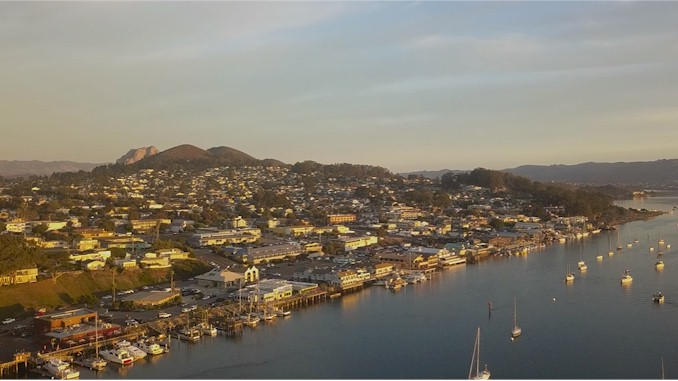
San Luis Obispo is nicknamed “SLO” or “San Luis” by locals, and it has a reputation for being one of the happiest places in America. In fact, it was featured in Oprah Winfrey’s show and National Geographic’s book as such. San Luis Obispo has a lot to offer to its residents and visitors, from its mild Mediterranean climate and natural beauty to its vibrant downtown and cultural scene.
San Luis Obispo is a great place to enjoy outdoor activities and recreation. You can hike, bike, or horseback ride on the numerous trails that surround the city, such as Bishop Peak, Cerro San Luis, Madonna Mountain, and Poly Canyon. You can also visit some of the parks and open spaces that offer scenic views and picnic areas, such as Laguna Lake Park, El Chorro Regional Park, and Avila Beach.
San Luis Obispo is also a great place to experience art and culture. You can visit some of the museums and galleries that showcase the history and creativity of the city, such as the Mission San Luis Obispo de Tolosa Museum, the San Luis Obispo Museum of Art, the History Center of San Luis Obispo County, and the Performing Arts Center. You can also explore some of the events and festivals that celebrate the diversity and spirit of the city, such as the Farmers’ Market, the SLO Film Fest, the SLO Jazz Festival, and the SLO Pride Festival.
San Luis Obispo is a must-see destination for anyone who loves to live well and have fun in a friendly and relaxed atmosphere.
| What to do | How to get there | Insider tips |
|---|---|---|
| Explore Downtown SLO | Take US-101 N to Monterey Street and turn right. Follow it to Downtown SLO. | Downtown SLO is the heart of the city, where you can find a variety of shops, restaurants, bars, cafes, theaters, and hotels. You can stroll along the tree-lined streets, admire the historic architecture, enjoy some live music or comedy, or join a walking tour or scavenger hunt. |
| Taste wine at Edna Valley | Take US-101 S to CA-227 S/Broad Street and turn left. Follow it to Edna Valley. | Edna Valley is a wine region that produces some of the finest Chardonnay and Pinot Noir wines in California. You can visit some of the wineries and tasting rooms that dot the valley, such as Chamisal Vineyards, Tolosa Winery, Wolff Vineyards, and Baileyana Winery. You can also enjoy some panoramic views of the vineyards and hills from the Edna Valley Scenic Loop Trail. |
| Experience Bubblegum Alley | Take US-101 N to Marsh Street and turn right. Follow it to Higuera Street and turn left. Bubblegum Alley will be on your right between Broad Street and Garden Street. | Bubblegum Alley is a quirky attraction that features a 70-foot-long (21 m) alleyway covered with chewed gum left by thousands of visitors over the years. You can add your own gum to the colorful collection or just marvel at the sticky spectacle. |
Hearst Castle: A Magnificent Mansion on a Hill
Hearst Castle is a historic estate in San Simeon, located on the Central Coast of California. It was conceived by William Randolph Hearst, the publishing tycoon, and his architect Julia Morgan, and was built between 1919 and 1947. Hearst Castle is also known as La Cuesta Encantada (Spanish for “The Enchanted Hill”) because of its location on a hill overlooking the Pacific Ocean.
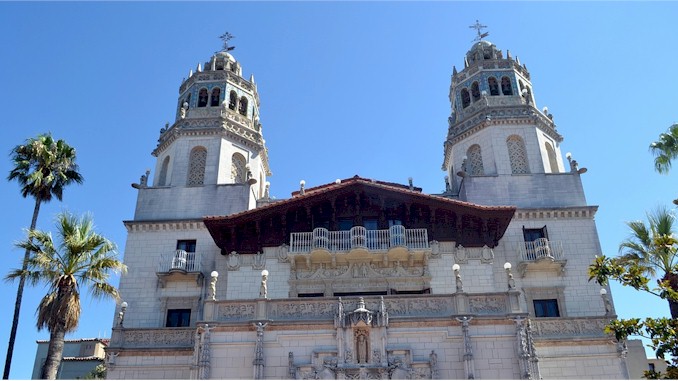
Hearst Castle is a masterpiece of architecture and art. It consists of a main building called Casa Grande, inspired by a Spanish cathedral, and three guest houses called Casa del Mar, Casa del Monte, and Casa del Sol. The estate has 165 rooms, including 56 bedrooms, 61 bathrooms, 19 sitting rooms, and a movie theater. The estate also features 127 acres of gardens, terraces, pools, and fountains. The castle houses Hearst’s extensive collection of art and antiques from around the world, ranging from ancient Egyptian statues to Renaissance paintings to modern sculptures.
Hearst Castle was a social hotspot in the 1920s and 1930s. Hearst invited many celebrities, politicians, artists, and writers to stay at his castle and enjoy his lavish hospitality. Some of his famous guests included Charlie Chaplin, Winston Churchill, Charles Lindbergh, Clark Gable, Greta Garbo, and Franklin D. Roosevelt. Hearst also hosted extravagant parties and events at his castle, such as costume balls, circus performances, and fireworks displays.
Hearst Castle is a must-see destination for anyone who loves history and culture. You can visit the castle as part of a guided tour that will take you through some of the most impressive rooms and areas of the estate. You can also learn more about Hearst’s life and legacy at the Hearst Castle Visitor Center and Museum. You can also enjoy some stunning views of the ocean and the countryside from the castle grounds.
| What to do | How to get there | Insider tips |
|---|---|---|
| Take a Grand Rooms Tour | Take US-101 N to CA-46 W/Green Valley Road and turn left. Follow it to CA-1 N/Cabrillo Highway and turn right. Follow it to Hearst Castle Road and turn left. The Visitor Center will be on your right. | The Grand Rooms Tour is one of the most popular tours at Hearst Castle. It takes you through some of the main rooms of Casa Grande, such as the Assembly Room, the Refectory, the Morning Room, and the Billiard Room. You’ll also see the Neptune Pool and the Roman Pool. The tour lasts about an hour and costs $25 for adults and $12 for children. |
| Explore the Gardens | Take US-101 N to CA-46 W/Green Valley Road and turn left. Follow it to CA-1 N/Cabrillo Highway and turn right. Follow it to Hearst Castle Road and turn left. The Visitor Center will be on your right. | The Gardens at Hearst Castle are a sight to behold. They feature a variety of plants and flowers from different regions and climates, such as palm trees, cacti, roses, orchids, and lilies. You’ll also find some sculptures and fountains that add to the beauty of the landscape. You can explore the gardens on your own or join a guided tour that will tell you more about their history and design. |
| Watch a Movie at Hearst Castle Theater | Take US-101 N to CA-46 W/Green Valley Road and turn left. Follow it to CA-1 N/Cabrillo Highway and turn right. Follow it to Hearst Castle Road and turn left. The Visitor Center will be on your right. | The Hearst Castle Theater is a five-story screen theater that shows a 40-minute film called “Building the Dream”. The film tells the story of how Hearst and Morgan created Hearst Castle and showcases some of the most amazing footage of the estate. The film costs $12 for adults and $8 for children and runs every 45 minutes throughout the day. |
Big Sur: A Breathtaking Stretch of Natural Beauty
Big Sur is a rugged and mountainous section of the Central Coast of California, between Carmel and San Simeon. It is where the Santa Lucia Mountains rise abruptly from the Pacific Ocean, creating a stunning landscape of cliffs, canyons, beaches, and forests. Big Sur is frequently praised for its dramatic scenery and its spiritual and artistic inspiration.
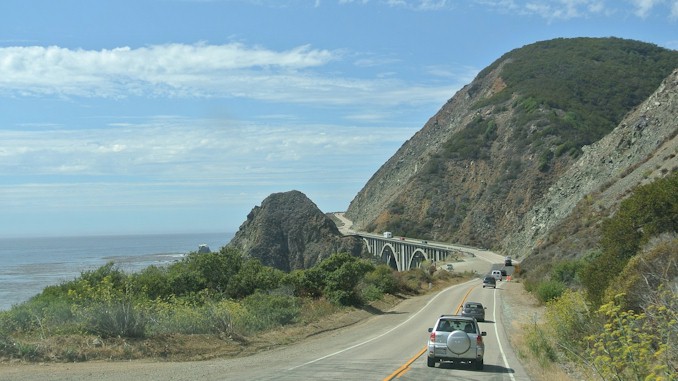
Big Sur is a place to connect with nature and yourself. You can admire the views of the ocean and the sky from the winding Highway 1, which runs along the edge of the coast. You can also explore some of the parks and reserves that protect the diverse flora and fauna of Big Sur, such as Pfeiffer Big Sur State Park, Julia Pfeiffer Burns State Park, Andrew Molera State Park, Limekiln State Park, and Point Lobos State Natural Reserve. You can hike, bike, camp, kayak, or simply relax in these natural wonders.
Big Sur is also a place to experience art and culture. You can visit some of the landmarks and attractions that showcase the history and creativity of Big Sur, such as the Henry Miller Memorial Library, the Hawthorne Gallery, the Esalen Institute, the Big Sur Folk Festival site, and the Bixby Creek Bridge. You can also discover some of the artists and writers who lived or worked in Big Sur, such as Henry Miller, Jack Kerouac, Edward Weston, Ansel Adams, Hunter S. Thompson, and Joan Baez.
Big Sur is a must-see destination for anyone who loves beauty and adventure. You can visit Big Sur at any time of the year, but be prepared for changing weather and road conditions. You can also plan ahead and book your accommodation in advance, as there are limited options in Big Sur.
| What to do | How to get there | Insider tips |
|---|---|---|
| See McWay Falls | Take Highway 1 to Julia Pfeiffer Burns State Park. Park at the entrance and walk 0.5 miles (0.8 km) along the Waterfall Overlook Trail. | McWay Falls is an 80-foot (24 m) waterfall that flows year-round from McWay Creek into the ocean. It is one of only two waterfalls in California that are close enough to the ocean to be called “tidefalls”. The best time to see McWay Falls is at sunset when the light creates a magical effect. |
| Visit Point Sur Lightstation | Take Highway 1 to Point Sur State Historic Park. Park at the entrance and join a guided tour that departs at 10 a.m., 1 p.m., or sunset on Saturdays and Sundays. | Point Sur Lightstation is a historic lighthouse that was built in 1889 on a volcanic rock 361 feet (110 m) above sea level. It is still an active aid to navigation and offers spectacular views of the coast and the ocean. The tour lasts about three hours and costs $15 for adults and $5 for children. |
| Experience Esalen Institute | Take Highway 1 to Esalen Institute. Book a workshop or a personal retreat online or by phone in advance. | Esalen Institute is a retreat center that offers educational programs on topics such as spirituality, psychology, art, ecology, and wellness. It is also known for its natural hot springs that overlook the ocean and are open to the public by reservation only from 1 a.m. to 3 a.m. The cost is $35 per person and includes a towel rental. |
Monterey: A Historic and Cultural Hub
Monterey is a city and county seat of Monterey County, located on the southern edge of Monterey Bay on the Central Coast of California. It was founded by the Spanish in 1770 and served as the capital of Alta California under both Spain and Mexico. It was also the site of the first constitutional convention in California in 1849. Monterey is known for its rich history and culture, as well as its natural beauty and marine life.

Monterey is a place to learn about the past and present of California. You can visit some of the historic landmarks and buildings that reflect the Spanish, Mexican, and American influences on Monterey, such as the Custom House, the Presidio of Monterey, the Royal Presidio Chapel, and Colton Hall. You can also explore some of the museums and attractions that showcase the art and heritage of Monterey, such as the Monterey Museum of Art, the Pacific House Museum, the Maritime Museum of Monterey, and Cannery Row.
Monterey is also a place to enjoy the sea and the sky. You can visit one of the world’s most renowned aquariums, the Monterey Bay Aquarium, which features more than 35,000 animals and plants from over 550 species. You can also experience some of the marine activities and recreation that Monterey offers, such as whale watching, kayaking, sailing, fishing, and diving. You can also admire some of the scenic views of the bay and the coast from various points in Monterey, such as Fisherman’s Wharf, Lovers Point Park, and Del Monte Beach.
Monterey is a must-see destination for anyone who loves history and culture. You can visit Monterey at any time of the year, but be aware that it can get foggy and chilly in the summer months. You can also plan ahead and book your accommodation in advance, as there are many options in Monterey ranging from luxury hotels to cozy bed and breakfasts.
| What to do | How to get there | Insider tips |
|---|---|---|
| See Cannery Row | Take Highway 1 to Del Monte Avenue and follow it to Cannery Row. | Cannery Row is a historic district that was once the center of the sardine industry in Monterey. It was made famous by John Steinbeck’s novel of the same name. Today, Cannery Row is a lively area with shops, restaurants, bars, hotels, and attractions. You can find everything from souvenirs to seafood to wine tasting here. |
| Visit Monterey Bay Aquarium | Take Highway 1 to Del Monte Avenue and follow it to Cannery Row. The aquarium will be on your left at the end of Cannery Row. | Monterey Bay Aquarium is one of the most popular attractions in Monterey. It displays a variety of marine habitats and creatures from Monterey Bay and beyond. You can see sharks, sea otters, penguins, jellyfish, octopuses, seahorses, and more. You can also learn about the conservation efforts and research projects that the aquarium supports. Admission is $49.95 for adults and $29.95 for children. |
| Enjoy Fisherman’s Wharf | Take Highway 1 to Del Monte Avenue and follow it to Figueroa Street. Turn right onto Figueroa Street and follow it to Fisherman’s Wharf. | Fisherman’s Wharf is a historic pier that was once a bustling fishing port. It is now a tourist destination with restaurants, shops, boat tours, whale watching cruises, fishing charters, and more. You can sample some of the local specialties such as clam chowder, calamari, abalone, and saltwater taffy here. |
Santa Cruz: A Fun and Funky Beach Town
Santa Cruz is a city and county seat of Santa Cruz County, located on the northern edge of Monterey Bay on the Central Coast of California. It was founded by the Spanish in 1791 and became a part of the United States in 1848. Santa Cruz is known for its progressive and eclectic culture, its vibrant downtown and boardwalk, its surfing and skateboarding scene, and its natural beauty and wildlife.

Santa Cruz is a place to have fun and express yourself. You can visit some of the attractions and landmarks that reflect the spirit and history of Santa Cruz, such as the Santa Cruz Beach Boardwalk, the Santa Cruz Surfing Museum, the Santa Cruz Wharf, the Mystery Spot, and the UC Santa Cruz campus. You can also enjoy some of the events and festivals that celebrate the diversity and creativity of Santa Cruz, such as the Santa Cruz Film Festival, the Santa Cruz Pride Parade, the Santa Cruz Shakespeare Festival, and the Santa Cruz Music Festival.
Santa Cruz is also a place to enjoy the sun and the sea. You can experience some of the best surfing and beach activities in California at some of the famous spots in Santa Cruz, such as Steamer Lane, Pleasure Point, Cowell’s Beach, and Natural Bridges State Beach. You can also explore some of the parks and reserves that protect the flora and fauna of Santa Cruz, such as Wilder Ranch State Park, Henry Cowell Redwoods State Park, Pogonip Open Space Preserve, and Monterey Bay National Marine Sanctuary.
Santa Cruz is a must-see destination for anyone who loves fun and funkiness. You can visit Santa Cruz at any time of the year, but be aware that it can get crowded and expensive during the summer months. You can also plan ahead and book your accommodation in advance, as there are many options in Santa Cruz ranging from hotels to hostels to campgrounds.
| What to do | How to get there | Insider tips |
|---|---|---|
| Ride the Giant Dipper | Take Highway 1 to Ocean Street and follow it to Beach Street. Turn right onto Beach Street and follow it to the Santa Cruz Beach Boardwalk. The Giant Dipper will be on your left near the entrance. | The Giant Dipper is a historic wooden roller coaster that was built in 1924 and is one of the oldest and most iconic rides in California. It offers thrilling drops, turns, and views of the ocean and the boardwalk. The ride costs $7 per person and is open daily from 11 a.m. to 11 p.m. |
| See sea lions at Santa Cruz Wharf | Take Highway 1 to Ocean Street and follow it to Beach Street. Turn right onto Beach Street and follow it to Pacific Avenue. Turn left onto Pacific Avenue and follow it to Municipal Wharf. The sea lions will be on your right under the wharf. | The sea lions are a popular attraction at Santa Cruz Wharf. They are loud, playful, and adorable creatures that lounge on the wooden pilings under the wharf. You can watch them from above or from below through viewing windows. You can also learn more about them from interpretive signs or from docents who offer free tours on weekends. |
| Hike in Henry Cowell Redwoods State Park | Take Highway 1 to Highway 9 N/Felton Empire Road and turn left. Follow it to Graham Hill Road and turn right. Follow it to Mount Hermon Road and turn left. Follow it to Felton Empire Road/Big Trees Park Road and turn right. The park entrance will be on your left after crossing a bridge over San Lorenzo River. | Henry Cowell Redwoods State Park is a beautiful park that features ancient redwood trees, lush ferns, creeks, waterfalls, meadows, and wildlife. You can hike on some of the trails that range from easy to moderate difficulty and length, such as Redwood Grove Loop Trail, River Trail, Eagle Creek Trail, or Pine Trail. You can also visit some of the attractions within or near the park, such as Roaring Camp Railroads , Garden of Eden , or Fall Creek Unit . |
Half Moon Bay: A Charming Coastal Retreat
Half Moon Bay is a city and county seat of San Mateo County, located on the Pacific Coast of California. It is about 25 miles (40 km) south of San Francisco and 45 miles (72 km) north of Santa Cruz. Half Moon Bay is named after its crescent-shaped bay that offers stunning views of the ocean and the sky. Half Moon Bay is known for its quaint downtown, its agricultural and fishing industries, and its surfing and beach activities.

Half Moon Bay is a place to relax and enjoy the coastal charm. You can visit some of the attractions and landmarks that reflect the history and culture of Half Moon Bay, such as the Half Moon Bay History Museum, the Pigeon Point Lighthouse, the James Johnston House, and the Spanishtown Historical District. You can also enjoy some of the events and festivals that celebrate the seasons and the products of Half Moon Bay, such as the Pumpkin Festival, the Art & Pumpkin Festival, the Dream Machines Show, and the Ol’ Fashioned 4th of July Parade.
Half Moon Bay is also a place to have fun and adventure. You can experience some of the best surfing and beach activities in California at some of the famous spots in Half Moon Bay, such as Mavericks, Surfer’s Beach, Dunes Beach, and Poplar Beach. You can also explore some of the parks and trails that offer scenic views and recreation opportunities, such as Half Moon Bay State Beach, Fitzgerald Marine Reserve, Coastside Trail, and Purisima Creek Redwoods Open Space Preserve.
Half Moon Bay is a must-see destination for anyone who loves coastal retreats. You can visit Half Moon Bay at any time of the year, but be aware that it can get foggy and windy in the summer months. You can also plan ahead and book your accommodation in advance, as there are many options in Half Moon Bay ranging from luxury resorts to cozy inns to campgrounds.
| What to do | How to get there | Insider tips |
|---|---|---|
| Shop at Main Street | Take Highway 1 to Main Street and follow it to Downtown Half Moon Bay. | Main Street is the main shopping area in Half Moon Bay. It features a variety of shops, restaurants, cafes, galleries, and boutiques that offer local and unique products and services. You can find everything from antiques to art to books to clothing to jewelry here. |
| Visit a Pumpkin Farm | Take Highway 1 to Highway 92 E/San Mateo Road and turn right. Follow it to one of the many pumpkin farms along the road. | Pumpkin farms are a popular attraction in Half Moon Bay, especially in October when they host the Pumpkin Festival. You can pick your own pumpkins from a variety of shapes, sizes, and colors. You can also enjoy some other activities such as hayrides, corn mazes, petting zoos, and pumpkin carving. |
| Hike at Purisima Creek Redwoods Open Space Preserve | Take Highway 1 to Higgins Canyon Road/Verde Road and turn left. Follow it to Purisima Creek Road and turn right. Follow it to one of the trailheads for Purisima Creek Redwoods Open Space Preserve. | Purisima Creek Redwoods Open Space Preserve is a beautiful park that features ancient redwood trees, creeks, waterfalls, meadows, and wildlife. You can hike on some of the trails that range from easy to strenuous difficulty and length, such as Purisima Creek Trail , Whittemore Gulch Trail , Craig Britton Trail , or Harkins Ridge Trail . You can also enjoy some panoramic views of the coast and the bay from various points in the park. |
Muir Woods: A Majestic Forest of Redwoods
Muir Woods is a national monument managed by the National Park Service, named after naturalist John Muir. It is located on Mount Tamalpais near the Pacific coast, in southwestern Marin County, California. It is part of the Golden Gate National Recreation Area, and is 12 miles (19 km) north of San Francisco. Muir Woods is one of the few remaining old-growth coast redwood forests in the world, and attracts over a million visitors every year.
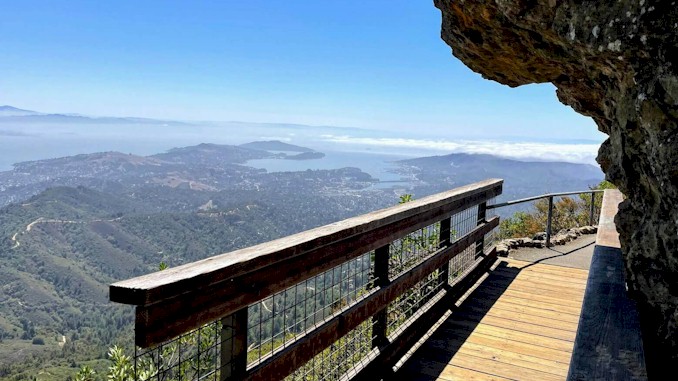
Muir Woods is a place to marvel at the ancient and majestic redwoods. You can walk among the towering trees that are over 200 feet (60 m) tall and up to 800 years old. You can also learn about the ecology and history of the forest through interpretive displays and programs. You can choose from several trails that range from easy to moderate difficulty and length, such as the Main Trail Loop, the Fern Creek Trail, the Hillside Trail, and the Ben Johnson Trail.
Muir Woods is also a place to enjoy the diversity and beauty of nature. You can see some of the plants and animals that live in the forest, such as ferns, mosses, mushrooms, squirrels, deer, owls, and woodpeckers. You can also explore some of the creeks and bridges that add to the charm of the landscape. You can also visit some of the nearby attractions that offer scenic views and recreation opportunities, such as Muir Beach, Stinson Beach, Mount Tamalpais State Park, and Point Reyes National Seashore.
Muir Woods is a must-see destination for anyone who loves forests and redwoods. You can visit Muir Woods at any time of the year, but be aware that it can get crowded and rainy in the winter months. You can also plan ahead and book your parking or shuttle reservation in advance at gomuirwoods.com. You can also bring your America the Beautiful pass to enjoy free entry to Muir Woods and other federal recreation sites.
| What to do | How to get there | Insider tips |
|---|---|---|
| See the Cathedral Grove | Take Highway 101 to Highway 1/ Shoreline Highway and turn left. Follow it to Panoramic Highway and turn right. Follow it to Muir Woods Road and turn left. The park entrance will be on your right after crossing a bridge over Redwood Creek. The Cathedral Grove will be on your left after entering the park. | The Cathedral Grove is one of the most impressive areas in Muir Woods. It features some of the oldest and tallest redwoods in the park, some reaching over 250 feet (76 m) high. The grove has a quiet and solemn atmosphere, as visitors are asked to remain silent or speak softly while walking through it. |
| Visit the Muir Woods Trading Company | Take Highway 101 to Highway 1/ Shoreline Highway and turn left. Follow it to Panoramic Highway and turn right. Follow it to Muir Woods Road and turn left. The park entrance will be on your right after crossing a bridge over Redwood Creek. The Muir Woods Trading Company will be on your right after entering the park. | The Muir Woods Trading Company is a gift shop and cafe that offers a variety of products and services for visitors. You can find souvenirs, books, clothing, jewelry, art, and more that celebrate Muir Woods and John Muir. You can also enjoy some food and drinks made with organic and local ingredients, such as sandwiches, salads, soups, coffee, tea, wine, and beer. |
| Hike to Muir Beach Overlook | Take Highway 101 to Highway 1/ Shoreline Highway and turn left. Follow it to Panoramic Highway and turn right. Follow it to Muir Woods Road and turn left. The park entrance will be on your right after crossing a bridge over Redwood Creek. Park at one of the trailheads for Dias Ridge Trail or Redwood Creek Trail along Muir Woods Road before or after entering the park. Follow either trail for about 3 miles (4.8 km) until you reach Muir Beach Overlook. | Muir Beach Overlook is a scenic spot that offers stunning views of the Pacific Ocean and the coast. It is also a historic site that was once part of a World War II coastal defense system. You can see some of the remnants of the bunkers and observation posts that were used to protect San Francisco Bay from enemy attacks. You can also enjoy some picnic tables and restrooms at the overlook. |
How to Plan Your Road Trip from LA to SF
A road trip from LA to SF is one of the most epic and scenic drives in the United States. You can choose from different routes depending on your time, budget, and preferences. You can also enjoy some of the best attractions, landmarks, and destinations along the way. Here are some tips on how to plan your road trip from LA to SF.
- Decide on your route. The shortest and fastest route is I-5, which takes about six to seven hours to drive the 383 miles from LA to SF. However, this route is not very scenic and can be boring and crowded. The most popular and scenic route is Highway 1, also known as the Pacific Coast Highway (PCH), which takes about 10 to 12 hours to drive the 500 miles from LA to SF along the coast. This route offers stunning views of the ocean, the cliffs, the beaches, and the towns. You can also take Highway 101, which is a bit more inland than Highway 1 but still offers some coastal scenery and attractions. You can also combine Highway 101 and Highway 1 for a more varied experience.
- Plan your stops. There are many amazing places to stop and explore on your road trip from LA to SF. Some of the highlights include Santa Monica Pier, Malibu, Ventura, Santa Barbara, Solvang, Pismo Beach, San Luis Obispo, Hearst Castle, Big Sur, Carmel-by-the-Sea, Monterey Bay Aquarium, Santa Cruz Boardwalk, Half Moon Bay, and Golden Gate Bridge. You can also visit some of the national and state parks along the way, such as Channel Islands National Park, Los Padres National Forest, Pfeiffer Big Sur State Park, Point Lobos State Natural Reserve, Henry Cowell Redwoods State Park, and Muir Woods National Monument.
- Book your accommodation. Depending on how long you want to spend on your road trip from LA to SF, you will need to book your accommodation in advance. There are many options for lodging along the way, ranging from luxury hotels to cozy bed and breakfasts to campgrounds. Some of the best places to stay include Santa Barbara Inn , Madonna Inn , Ventana Big Sur , Carmel Valley Ranch , Dream Inn , and Hotel Zephyr .
- Pack your essentials. A road trip from LA to SF requires some preparation and packing. You will need a reliable car with enough gas and a spare tire. You will also need a GPS or a map app on your phone with offline access. You will need some snacks and drinks for the road and a cooler if you want to keep them fresh. You will also need some layers of clothing for the changing weather and temperatures along the coast. You will also need some sunscreen, sunglasses, hats, and swimsuits for the sunny days at the beach.
| Route | Distance | Time | Scenery |
|---|---|---|---|
| I-5 | 383 miles | 6-7 hours | Boring |
| Highway 1 | 500 miles | 10-12 hours | Stunning |
| Highway 101 | 420 miles | 7-8 hours | Moderate |
When to Go: The Best Time to Visit the Coastline
The best time to visit the coastline of California depends on what you want to do and see. The coastline stretches for over 800 miles from north to south, and has different climates and attractions along the way. Here are some general tips on when to go and what to expect.
- Spring (April to May): This is a good time to enjoy pleasant temperatures, not too hot nor too cold, and less crowds and lower prices than in summer. The spring months are also ideal for wildflower viewing, especially in the deserts and hills of Southern California. However, be aware that some coastal areas can be foggy and chilly in spring, especially in the north. Also, some attractions and facilities may not be open or have limited hours in spring.
- Summer (June to August): This is the peak season for visiting the coastline of California, as many people come for the sun, surf and sea. The summer months offer warm and sunny weather, especially in Southern California, where the beaches are thronged and the Pacific is warm. However, this also means that the coastline can be crowded and expensive in summer, with traffic jams and long lines. Also, some coastal areas can be surprisingly cool and foggy in summer, especially in the Bay Area and the Central Coast.
- Fall (September to October): This is another good time to visit the coastline of California, as the weather is still warm and sunny, but the crowds and prices are lower than in summer. The fall months are also ideal for wine tasting, as this is when the harvest season takes place in many regions, such as Napa Valley, Sonoma County, Paso Robles, and Santa Barbara County. However, be aware that some coastal areas can be windy and rainy in fall, especially in the north. Also, some attractions and facilities may close or have limited hours in fall.
- Winter (November to March): This is the off-season for visiting the coastline of California, as the weather can be cold and wet, especially in the north. However, this also means that the coastline can be quiet and affordable in winter, with less traffic and more availability. The winter months are also ideal for surfing, as this is when the biggest waves hit the coast, especially at spots like Mavericks near Half Moon Bay. However, be prepared for chilly water temperatures and strong currents.
| Region | Best Time | Highlights |
|---|---|---|
| Southern California | Summer (June to August) | Beaches, surfing, theme parks |
| Central Coast | Fall (September to October) | Wine tasting, whale watching, Hearst Castle |
| Bay Area | Spring (April to May) or Fall (September to October) | Golden Gate Bridge , Alcatraz , Muir Woods |
| Northern California | Summer (June to August) | Redwoods , lighthouses , coastal trails |
How to Rent a Car: Tips and Tricks for Getting a Good Deal
Renting a car can be a convenient and flexible way to travel, whether you need it for a road trip, a business trip, or a vacation. However, renting a car can also be confusing and expensive if you don’t know what to do and what to avoid. Here are some tips and tricks for getting a good deal on your car rental.
- Research available rentals and choose a location. Before booking a rental, find out what cars are available and price ranges. You can use online platforms like KAYAK to compare offers from different rental companies and filter by car type, policies, pick-up location, and total price. You can also check reviews and ratings from other customers to get an idea of the service quality. Generally, renting from airport locations is more expensive than renting from non-airport locations, so you may want to consider taking public transportation or a shuttle to a nearby off-airport location to save money.
- Make a reservation. Scheduling your reservation in advance helps ensure you get a car that meets your needs. You can book online or by phone with the rental company of your choice. You typically don’t need to make a payment to schedule your reservation, but you may need to provide your credit card information or a deposit. You can also cancel or modify your reservation for free up to 24 hours before your pick-up time on most platforms. However, some rental companies may charge a cancellation fee or a no-show fee if you don’t show up for your reservation without notifying them.
- Have your payment method ready. When you pick up your car, you will need to present a valid driver’s license and a credit card in your name. Some rental companies may also accept debit cards, cash, or prepaid cards, but you may need to provide additional documents or deposits. You will also need to pay for any extras you want, such as GPS, child seats, toll passes, or additional drivers. You can also choose whether to prepay for the fuel or refill the tank yourself before returning the car.
- Review the contract. Before signing the contract, make sure you understand all the terms and conditions of your rental agreement. This includes the rental period, the mileage limit, the insurance coverage, the fees and taxes, and the penalties for late return, damage, or traffic violations. You can also decline any optional services or products that you don’t need or want, such as collision damage waiver (CDW), personal accident insurance (PAI), or roadside assistance.
- Inspect the vehicle. Before driving away, inspect the vehicle for any existing damage, such as scratches, dents, stains, or malfunctions. Make sure everything is working properly, such as the lights, the brakes, the air conditioning, and the radio. If you find any damage or issues, report them to the rental agent and take photos as proof. This will help you avoid being charged for damage that you didn’t cause when you return the car.
- Return the vehicle. When you return the vehicle, make sure you follow the instructions given by the rental company. This may include returning it to a specific location, parking it in a designated spot, locking it and leaving the keys in a drop box, or handing it over to an agent. You should also check the fuel level and refill it if necessary according to your contract. You should also inspect the vehicle again for any new damage or issues and report them to the agent if any. You should also get a receipt that shows the final charges and any refunds or deposits.
| Do | Don’t |
|---|---|
| Compare offers from different rental companies | Rent from airport locations without checking off-airport prices |
| Book in advance and cancel or modify for free if needed | Book at the last minute or no-show without notifying |
| Bring your driver’s license and credit card | Forget to bring additional documents or deposits if using other payment methods |
| Decline optional services or products that you don’t need | Accept everything without reading the contract |
| Inspect the vehicle before and after renting | Ignore any existing or new damage |
| Return the vehicle on time and with full tank | Return the vehicle late or with empty tank |
Where to Stay: The Best Hotels and Accommodations Along the Way
One of the most important aspects of planning a road trip from LA to SF is finding the best hotels and accommodations along the way. Depending on your route, budget, and preferences, you can choose from a variety of options, from luxury resorts to cozy bed and breakfasts to campgrounds. Here are some of the best hotels and accommodations along the way, based on customer reviews and ratings.
- Along Highway 1: If you want to enjoy the stunning scenery of the Pacific Coast Highway, you can stay at some of the best hotels along Highway 1. Some of the highlights include The Surfrider Malibu , a super cool boutique hotel with Scandinavian decor and ocean views; Four Seasons Resort The Biltmore Santa Barbara , a spacious Spanish resort hotel with lush gardens and a spa; Ventana Big Sur , a romantic and organic property built into the cliffs of Big Sur; Carmel Valley Ranch , a family-friendly resort with golf, spa, and outdoor activities; Dream Inn , a beachfront hotel with retro vibes and a rooftop pool in Santa Cruz; and Hotel Zephyr , a hip and nautical-themed hotel near Fisherman’s Wharf in San Francisco.
- Along Highway 101: If you want to experience some of the inland attractions and towns along Highway 101, you can stay at some of the best hotels along Highway 101. Some of the highlights include Madonna Inn , a quirky and colorful hotel with themed rooms and a pink restaurant in San Luis Obispo; The Landsby , a chic and modern hotel with Scandinavian design and a cozy restaurant in Solvang; Rosewood Miramar Beach , a family-friendly hotel with beach butlers and an indoor clubhouse for kids in Santa Barbara; Ritz Carlton Laguna Niguel , a luxurious hotel with clifftop views and beach activities in Dana Point; Mission Pacific Hotel , a budget-friendly hotel with a rooftop pool and a surf museum in Oceanside; and Kimpton Shorebreak Resort , a hotel with activities like yoga, surfing, and biking in Huntington Beach.
- Along I-5: If you want to take the shortest and fastest route from LA to SF, you can stay at some of the best hotels along I-5. Some of the highlights include Hyatt Regency Valencia , a modern hotel with an outdoor pool and a golf course in Valencia; Harris Ranch Inn & Restaurant , a ranch-style hotel with a steakhouse and a bakery in Coalinga; Gaia Hotel & Spa Redding , an eco-friendly hotel with a spa and a restaurant in Anderson; Sheraton Redding Hotel at the Sundial Bridge , a contemporary hotel with an outdoor pool and a fitness center in Redding; Granzella’s Inn , a cozy hotel with an Italian restaurant and a deli in Williams; and Hyatt Regency Sacramento , an elegant hotel with an outdoor pool and a bar in Sacramento.
| Route | Hotel | Location | Rating |
|---|---|---|---|
| Highway 1 | The Surfrider Malibu | Malibu | 9.4/10 |
| Highway 1 | Four Seasons Resort The Biltmore Santa Barbara | Santa Barbara | 9.2/10 |
| Highway 1 | Ventana Big Sur | Big Sur | 9.3/10 |
| Highway 1 | Carmel Valley Ranch | Carmel-by-the-Sea | 9.0/10 |
| Highway 1 | Dream Inn | Santa Cruz | 8.8/10 |
| Highway 1 | Hotel Zephyr | San Francisco | 8.4/10 |
| Highway 101 | Madonna Inn | San Luis Obispo | 8.7/10 |
| Highway 101 | The Landsby | Solvang | 9.0/10 |
| Highway 101 | Rosewood Miramar Beach | Santa Barbara | 9.4/10 |
| Highway 101 | Ritz Carlton Laguna Niguel | Dana Point | 8.9/10 |
| Highway 101 | Mission Pacific Hotel | Oceanside | 8.6/10 |
| Highway 101 | Kimpton Shorebreak Resort | Huntington Beach | 8.7/10 |
| I-5 | Hyatt Regency Valencia | Valencia | 8.6/10 |
| I-5 | Harris Ranch Inn & Restaurant | Coalinga | 8.5/10 |
| I-5 | Gaia Hotel & Spa Redding | Anderson | 8.3/10 |
| I-5 | Sheraton Redding Hotel at the Sundial Bridge | Redding | 9.1/10 |
| I-5 | Granzella’s Inn | Williams | 8.4/10 |
| I-5 | Hyatt Regency Sacramento | Sacramento | 8.6/10 |
What to Pack: The Essential Items for Your Road Trip
A road trip from LA to SF can be a fun and memorable experience, but it also requires some preparation and packing. You want to make sure you have everything you need for a comfortable and safe journey, as well as some items that can enhance your enjoyment and convenience. Here are some of the essential items for your road trip.
- Clothing and accessories. California has a diverse climate and weather, so you need to pack clothing and accessories that can suit different temperatures and conditions. You should pack layers of clothing that can keep you warm or cool depending on the weather, such as t-shirts, sweaters, jackets, jeans, shorts, dresses, and leggings. You should also pack some swimsuits, sunglasses, hats, and sunscreen for the sunny days at the beach. You should also pack some comfortable shoes for walking and hiking, as well as some sandals or flip-flops for the sand.
- Toiletries and personal items. You should pack toiletries and personal items that can keep you clean and fresh during your road trip, such as toothbrush, toothpaste, shampoo, conditioner, soap, deodorant, razor, comb, hairbrush, hair ties, makeup, moisturizer, lip balm, tissues, wipes, sanitizer, and feminine products. You should also pack any medications or prescriptions that you need, as well as a first aid kit with bandages, antiseptic cream, painkillers, allergy pills, and motion sickness pills.
- Electronics and gadgets. You should pack electronics and gadgets that can keep you entertained and connected during your road trip, such as phone, charger, power bank, headphones, laptop, tablet, camera, memory card, tripod, e-reader, books, magazines, games, cards, and puzzles. You should also pack a GPS or a map app on your phone with offline access to help you navigate your route. You should also pack a flashlight or a headlamp for emergencies or camping.
- Snacks and drinks. You should pack snacks and drinks that can keep you energized and hydrated during your road trip. You should pack snacks that are healthy and easy to eat on the road such as nuts , granola bars , dried fruits , jerky , crackers , cheese , chocolate , candy , gum , and mints . You should also pack drinks that are refreshing and quenching such as water , juice , soda , coffee , tea , energy drinks , and sports drinks . You should also pack a cooler if you want to keep your snacks and drinks fresh.
- Road trip essentials. You should pack road trip essentials that can make your journey more comfortable and safe such as a car rental reservation , driver’s license , credit card , insurance card , registration card , spare tire , tire jack , tire pressure gauge , jumper cables , car manual , roadside assistance number , emergency contacts , blankets , pillows , towels , trash bags , paper towels , napkins , utensils , cups , plates , bowls , and a bottle opener .
| Category | Items |
|---|---|
| Clothing and accessories | T-shirts , sweaters , jackets , jeans , shorts , dresses , leggings , swimsuits , sunglasses , hats , sunscreen , shoes , sandals |
| Toiletries and personal items | Toothbrush , toothpaste , shampoo , conditioner , soap , deodorant , razor , comb , hairbrush , hair ties , makeup , moisturizer , lip balm tissues wipes sanitizer feminine products medications prescriptions first aid kit |
| Electronics and gadgets | Phone charger power bank headphones laptop tablet camera memory card tripod e-reader books magazines games cards puzzles GPS or map app flashlight or headlamp |
| Snacks and drinks | Nuts granola bars dried fruits jerky crackers cheese chocolate candy gum mints water juice soda coffee tea energy drinks sports drinks cooler |
| Road trip essentials | Car rental reservation driver’s license credit card insurance card registration card spare tire tire jack tire pressure gauge jumper cables car manual roadside assistance number emergency contacts blankets pillows towels trash bags paper towels napkins utensils cups plates bowls bottle opener |
Conclusion: What Are You Waiting For?
A road trip from LA to SF is one of the best ways to experience the beauty, diversity, and culture of California. You can explore some of the most amazing places and attractions along the way, from stunning beaches and cliffs to charming towns and cities to majestic mountains and forests. You can also enjoy some of the best food, wine, and entertainment that the Golden State has to offer.
Whether you choose to take the scenic Highway 1, the inland Highway 101, or the fast I-5, you will have a memorable and enjoyable journey that will make you fall in love with California. You will also have a comfortable and convenient stay at some of the best hotels and accommodations along the way, as well as a smooth and safe ride with your car rental and your road trip essentials.
So what are you waiting for? Start planning your road trip from LA to SF today and get ready for the adventure of a lifetime. You won’t regret it!
“The journey not the arrival matters.” – T.S. Eliot

